Few names in cinematic history garner as much excitement and critical praise as Jean-Luc Godard. An innovative maverick and intellectual visionary, Godard was a pioneer of the La Nouvelle Vauge, or “New Wave” of the late 1950′s to late 1960′s. At a time when the Hollywood star machine was at it’s apex, Godard’s films were considered a sort of outlaw cinema, undermining all rules on which the traditional Hollywood narrative was perfected.
Born in Paris in 1930, Godard’s interest in film and Marxist philosophy (which would influence much of his work) developed early. In the early 1950′s he began writing for Cashiers Du Cinéma, a French film magazine focusing on theory and criticism, along with future New Wave colleagues François Truffaut and Claude Chabrol. Godard published many articles denouncing the stagnant state of Hollywood films and directors, claiming their works to be one-dimensional and without any social, political or philosophical importance.
Hollywood was, he claimed, nothing more than an over-milked cash cow, capable of entertaining the masses on a very shallow level. What Godard envisioned for the future of film was to not only entertain the audience, but also make them feel and think on a much deeper level. He desired his audience to not be dazzled by mere spectacle, rather to be pulled into the narrative he presented to them, make them feel the emotions of the complex characters he created, and walk away challenged by his political and philosophical message.
Godard’s filmmaking style is immediately recognizable. His revolutionary use of film techniques, in particular editing, sound, color, lighting and Brechtian Distanciation and the blurred diegesis created high-energy, visually-stunning films unlike anything audiences had ever seen. For Godard, these techniques were not merely means of showing the story, but also telling it. His mastery over each aspect of a film allowed him to speak in silent metaphors and add incredible depth to filmmaking. Fueled by his love of art and philosophy, Godard also pushed the envelope on audience reception. He believed audiences shouldn’t be mere passive viewers, but have a film-viewing experience filled with total sensory immersion in the story and empathy for each of its characters.
1. À bout de souffle (1960) – Editing
The thought of creating a list focusing on Godard’s innovative film techniques without showcasing Breathless is like having a Catholic mass without communion. Many film critics and theorists have claimed this is not only one of the greatest films of the French New Wave, but its most defining. Daring, exciting and without limits, Breathless changed the rules for what is acceptable in filmmaking. What Breathless is most commonly known for is Godard’s style of editing, which made the jump cut popular and acceptable. Films at this time were expected to follow a smooth digression of editing, with every cut following a very “logical” pattern. Godard completely did away with this generic formula for storytelling, and instead relied on unexpected, quick jumps in editing.
Only minutes into the film do we see the first jump cuts. Jean-Paul Belmondo plays Michel, a petty crook who views himself a master criminal. In the first scene, we witness him steal a car from the streets of Paris in broad daylight, and escape with it into the countryside. He in no way tries to make himself inconspicuous and rushes through the narrow country road at top speed.
Godard makes use of the jump cut when Michel passes numerous cars on the road. We’re given a POV shot from Michel’s view on the street, quickly passing car after car. Here Godard is showing the same action over and over again, without fluidity or polish. It’s a disjointed chaos we’re thrown into. The mastery of Godard’s precise cutting not only gives the audience a thrill, but also explicates the character of Michel. He isn’t the mastermind he thinks he is. He isn’t smooth or cautious. He’s reckless and will undoubtedly be arrested before he can reach the heights of crime.
Just a few minutes after, we witness Michel’s mindlessness catch up to him. He’s pulled over by a motorcycle cop for speeding (and possibly car theft). As the police officer begins to apprehend Michel, Michel instinctively pulls out a gun and shoots the cop in the chest, killing him on the spot. Godard shows the death in only four quick shots, and suddenly cuts to Michel sprinting across the countryside. Once again, Godard utilized editing to silently elucidate character. Michel is a man who makes quick, thoughtless decisions, and as our protagonist, we have no idea where he will take us in the story.
Another distinctive feature of Godard’s editing was his abandonment of shot-reverse-shot in scenes of conversation. Instead, Godard preferred to show in the same frame every character who was involved in a discussion, or focus on the face of only one when dialogue became more intimate and focused on that character. For instance, the lengthy dialogue between Patricia and Michel in Patricia’s apartment is carefully edited to keep the audience’s attention on the right character.
Conventional Hollywood films made during the time of The French New Wave would typically focus the camera on whoever was speaking, shifting focus between characters. This is shot-reverse-shot. Godard completely did away with this standard of filming dialogue, and what the audience saw as a result was extraordinary. When the character who is the subject of conversation is the unbroken focus of the camera, he or she cannot hide. The audience sees his or her initial reactions to the dialogue, typically personal in Godard’s narratives. Without breaking away from the character in question, we are able to see the character in great depth through wordless action and expression.
2. Vivre Sa Vie (1962) – Lighting
In this episodic narrative starring Anna Karina as Nana, a failed actress turned prostitute to pay the rent, Godard utilized dramatic lighting and black and white film to capture the heartache and sadness of this lost young woman. This film was made just a year after his cheerful, Technicolor-drenched comedy A Woman is Woman, also starring Anna Karina as radiant ingénue, Angela. The stark difference between the two in subject matter, one a visually-dazzling comedy, the other a dark exploration into the life of a woman trying to find her place in this world, is a testament to the depth of Godard’s artistry and Karina’s acting abilities.
What’s especially interesting about this film is how Godard manipulates lighting to show darkness. The illumination or lack of becomes an extension of Nana’s conflicted conscience. In the opening credits, we are introduced to Nana behind the text, her profile veiled by a heavy shadow and low lighting. She sits there in silence, and we can scarcely make out her features or what exactly she is feeling at that moment. Suddenly, the film cuts to her full face in bright lighting. Nothing can be hidden in this brightness, nothing can be unseen. We see every feature of her pristine face contorted into a deep sadness she conveys simply by looking at us without vocalization. In another cut, she returns to her turned position and shadowy mystique, as if she cannot bare the pain of her past or the shame of her present.
Another powerful use of lighting in the film occurs in a movie theater, where Nana views a film on Joan of Arc. We come in at the end of the film, when Joan learns of the gruesome fate that awaits her as penance for her offenses. We see Nana’s face illuminated by the bright, artificial light of the movie screen, tears streaming down her face and an expression of overwhelming inferiority. We get the sense that she is projecting her own life onto the screen, desiring to live and die nobly and for a purpose. Nana doesn’t look away or hide from us once, she’s comfortable in the synthetic lighting Godard allows her to rest in.
Minutes later in the film, we see Nana in a completely different setting- being interrogated for theft by the police. Here she is being chastised for her offenses, just as she saw Joan of Arc in the film. However, she realizes her crime is in no way noble, and a criminal sentence would be just. There is no darkness for her to hide in, natural lighting surrounds her. She is so ashamed of herself she can hardly keep her head up for us to see. She tries in vain to hide her face from the audience, and looks guiltier as a result.
3. Masculin Feminin (1966) – Sound
The manipulation of sound is a critical aspect of Godard’s unique style. A story about the joy of youthful optimism and cynicism of experience, Masculin Feminin stars Jean-Pierre Léaud as Paul, a young Marxist struggling with his political convictions in mid-60′s Paris. Fresh out of the French Army, Paul is dedicated to the Communist party along with his closest friend, Michel (Robert Packard). As he falls in love with a young rising pop star, Madeleine (Chantal Goya), he is dragged further and further away from his philosophical ideologies and thrust into an environment of materialism and shallow dreams, an environment he finds both unethical and repellent. However, his love for Madeleine overpowers his political convictions which makes him question his authenticity and dedication to the party.
What Godard so artistically does in this film is make the audience empathize with Paul’s struggle through the careful use of sound. Over the opening credits, we hear Paul patriotically whistling the French anthem, written during the French Revolution after the proletariat overtaking of the monarchy. We are first introduced to Paul philosophizing in a cafe. We can hear indistinct sounds of life and chatter behind him, but we don’t see it. We don’t truly experience anything but Paul’s spoken manifesto he so desperately wants to protect. He is tucked away peacefully in his seat, his words are the only ones we need to hear. It’s not until Paul first lays eyes on the attractive Madeleine that his concentration is broken, his words are silenced, and we take part in the mundane everyday life around him.
A turning point in the film is marked with a calculated choice of music. At this point in the film, Paul and Madeleine have started a relationship and are enjoying a dinner with friends. Madeleine is gushing over her latest success in the plastic pop music business, which is completely unimpressive to Paul. Before heading off to bed, Paul puts on one of his favorite classical music scores. Madeleine ridicules his musical taste and is completely unmoved by the beauty of the score. With the choice of this one song, Godard has made the personal pursuits of the two young lovers completely polarized, Paul’s being intellectual and Madeline’s being material.
As the narrative progresses, Madeline’s fame in the music industry grows until she’s a recognizable star of the business. In one of the most devastating scenes in the film, we see Paul and Madeleine in a movie theater, chatting with a friend before the start of the movie. Over their dialogue, we hear Madeleine’s hit single playing. It’s a generic facsimile of the ordinary pop music of the mid-60′s , nothing is powerful or intellectual about it. What’s most troubling is the disjointedness of the track, stopping and going without any obvious reason. However, if we factor in Paul’s conflicted conscience torn between love and his moral convictions, we understand why the track is so stop-and-go. His needs and wants are clashing to an unbearable point.
Madeleine feels none of the conflict Paul experiences. She is completely set on nurturing her newfound fame, with or without Paul’s companionship. As we see her recording her debut album, Paul makes a bold move in the studio. In a desperate plea for Madeleine to focus on him rather than her music, Paul stands between her and the sound booth, looking her straight in the eye. She doesn’t even seem to notice his presence as she continues recording one of her songs, the music unheard to Paul and us. She chooses fame without saying a word, singing to the music he has all along rejected.
The last we hear of Paul is through an extra-diegetic monologue over a silent montage of Parisian pedestrians. Just like the first scene, we are listening to Paul philosophize, but this time we can’t see him. We see only what he so strongly opposes in life- consumerism, materialism, capitalism and the commonplace existence of non-intellectuals. There is a sadness in his voice, a loss of spark and zest, without the hope he once had for his nation. The film ends with the death, likely suicide, of the young optimist.
4. Pierrot le Fou (1965) - Color
One of Godard’s most political films, Pierrot le Fou mixes adventure, romance and existential confusion to make one bold and brave achievement in his body of work. Starring two of the most familiar faces of Godard’s cinema, Jean Paul Belmondo and Anna Karina, this is a film that will likely leave you worn with excitement and ravaged with heartache. Godard’s most obvious method of silent storytelling in this film is his use of color to show the polarization of thirtysomething Ferdinand’s (Belmondo) high social status and desire for a more challenging, reflective life. Throughout the film, Godard uses the colors blue and red as a motif of the two lives Ferdinand is stuck between. Blue represents the world in which he originally lives, a life of bourgeois privilege, and red represents the life he desires, a life of adventure and existential reflection.
When we are first introduced to Ferdinand, we see him in his luxurious home with his pampered wife and child. He is surrounded by an almost nauseating amount of blue covering the walls, his bedspread, even the trim on his young daughter’s dress. He walks into the bedroom in his bathrobe, and if we look carefully, his robe is not only striped blue, but red. Godard silently establishes Ferdinand’s conflict in this very subtle detail. Ferdinand is comfortably wearing blue in this scene as he enjoys the domestic luxuries his bourgeois home life has given him, but as we see him attend a party with fellow members of the rich and pampered upper class, we see him wear a grey suit with a red tie.
We listen to the vacuous conversations he overhears about sports cars and beauty products, and we feel his isolation from the shallow minds he walks amongst. He leaves the party early and drives the babysitter, Marianne (Karina), coincidentally his ex-girlfriend, home. After they reconnect during the drive to her apartment, he decides to leave his family for what he believes will be a more meaningful existence with Marianne. We see them the next morning in her apartment, both wearing light blue, not the royal blue that saturated his past life. The domestic comforts will be maintained without the superfluous materialism.
As the film progresses, we learn Marianne is wanted by the OAS, an organization fighting to maintain French Imperialism in Algeria. As Ferdinand sees the OAS as a reminder of his past privilege, he joins Marianne by fleeing into the countryside. They steal a bright red car and proudly display their rejection of high society.
As the story progresses, Marianne grows tired of their vagabond lifestyle, while Ferdinand still attempts to convince himself he’s living the life he was made for.
Once they reemerge into the general population, OAS party members catch wind of their location. Ferdinand is captured and water boarded, smothered by Marianne’s red dress, metaphorically the rebellious life he once idealized. He quickly betrays Marianne and gives his captors her whereabouts, and the film cuts to Ferdinand’s journal. In it he writes in blue ink, “I’ve never understood Marianne’s loyalty”. With another quick cut, we see Ferdinand walking the streets in a blue suit.
By the end of the film, we learn Marianne has been involved with another man through the entire story. Ferdinand had put so much hope into his life with her, imagining she would be his way out of an artificial existence, just to learn their entire relationship was based on lies. Heartbroken and more lost than ever, Ferdinand shoots Marianne and her lover, then hastily paints his face with blue paint, a proclamation that he can never escape the advantageous life he once despised. His despair becomes too much to bear, and he wraps his face in red dynamite and lights the fuse. Metaphorically speaking, it was the veneration and pursuit of a life he never understood that killed him.
5. Une Femme est Une Femme (1961) - Brechtian Distanciation and the Blurred Diegesis
Arguably Godard’s happiest film, A Woman is a Woman is also one of his most distinctive. We’re treated to yet another performance by the lovely, effervescent Anna Karina, who plays a young striptease artist longing to have a baby with her reluctant live-in boyfriend. While the film mixes a lighthearted storyline, a vivacious film score and many comedic moments among its main characters, the film remains a very intimate look into the various emotional disparities of human relationships.
Godard employs one of his most celebrated and controversial film techniques to bring us close to the characters of the story, that is Brechtian Distanciation, a concept first introduced to the stage by German playwright Bertolt Brecht. This techniques breaks any barrier between the audience and characters, or “fourth wall”, drawing the audience into the story with greater empathy and intimacy. Godard was so hugely impressed and influenced by Brecht’s gutsy rejection of classical rules of theater that he adapted these unconventional techniques for his films. As a result, he blurred the lines of the diegesis, the world inside the film, with the world of the audience.
A Woman is a Woman gives some of the clearest examples of this artistic anarchy. Within seconds of first seeing our protagonist, Angela (Karina), she stares directly into the camera and gives us a coy wink. She is actively inviting us into her life and the story that is about to unfold. We learn there are three main characters- Angela, her boyfriend, Émile (Jean-Claude Brialy), and her close friend who is hopelessly in love with her (Jean-Paul Belmondo).
As the film progresses, we see all three of these characters directly address the audience, either to air a grievance or seek approval. In the boldest reminder that we are active participants in this narrative, both Angela and Émile theatrically bow to us before they start an argument. With this gesture of good will, they are subtly asking us to take sides. It’s a bold move by Godard and one that became the most distinctive features of his artistry.
Jean-Luc Godard gave new meaning to the art of film with his fearless, unapologetically innovative filmmaking style. His artistic pursuits changed the rules of filmmaking so profoundly, he likely could never have predicted the incredible artistic transformation he inspired. Not only did he change the way films are made, he changed the way audiences watch them. His conviction that viewers are capable of more than passive observation pushed fellow filmmakers to raise their expectations of viewers and challenge them in ways never thought of before.
http://www.tasteofcinema.com/2014/5-case-studies-of-jean-luc-godards-innovative-filmmaking-techniques/#8axTBrdQJ5aI6CTe.99
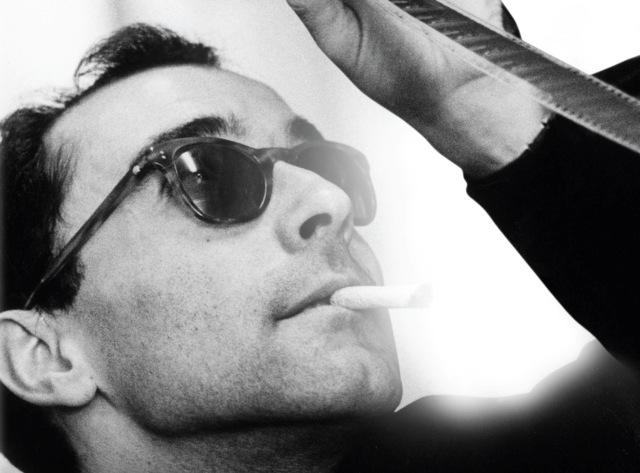
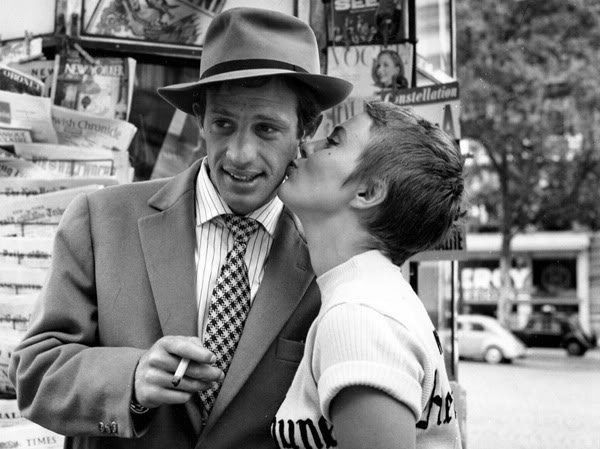
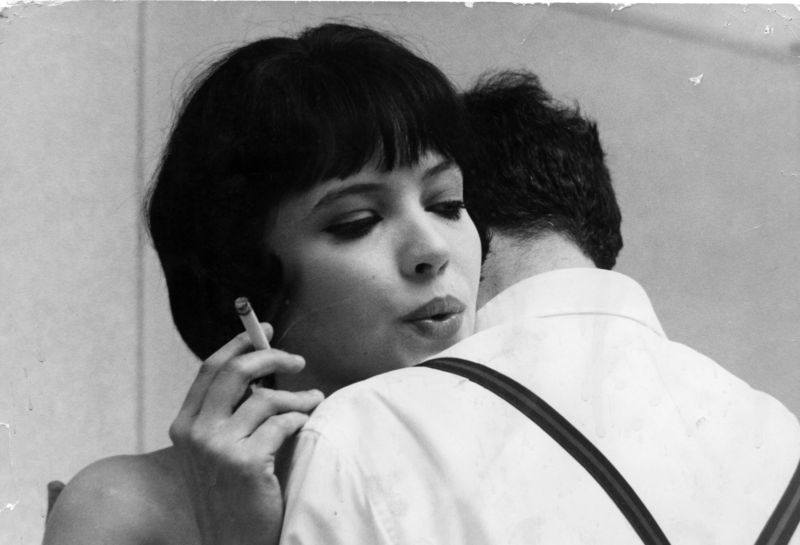
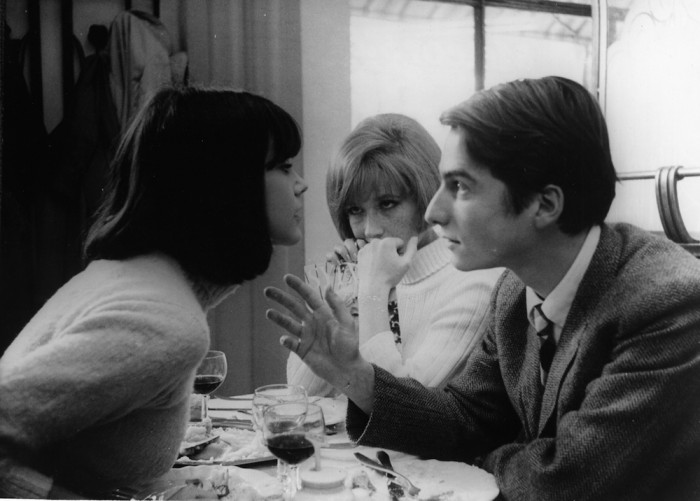
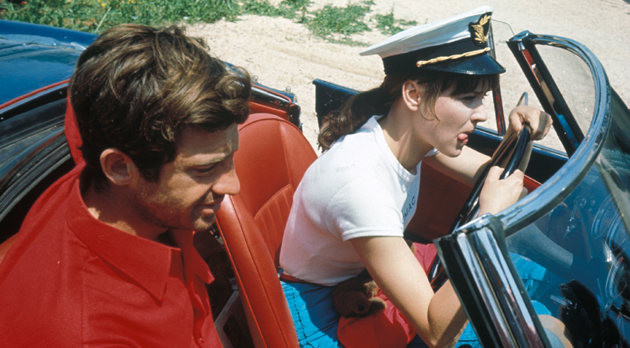

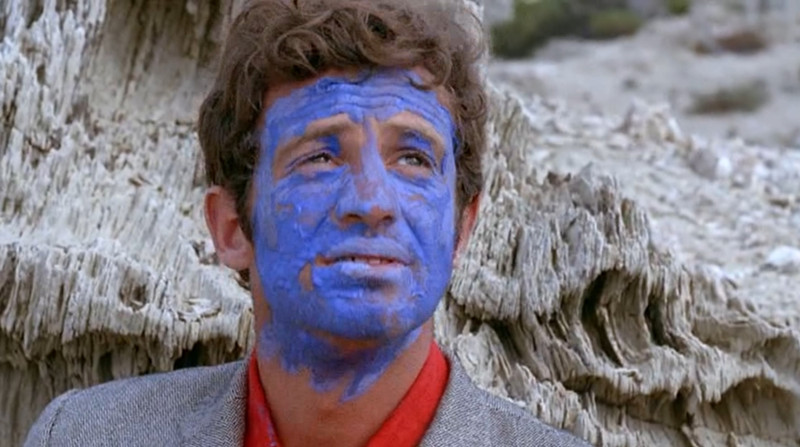
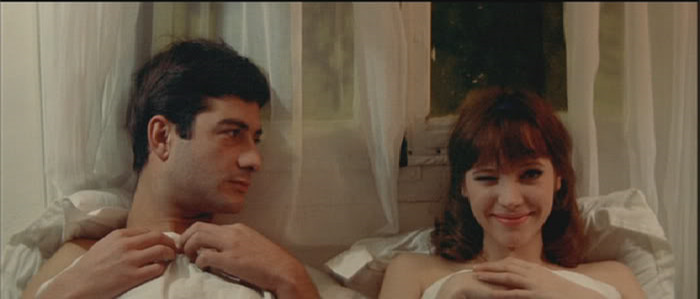
No comments:
Post a Comment